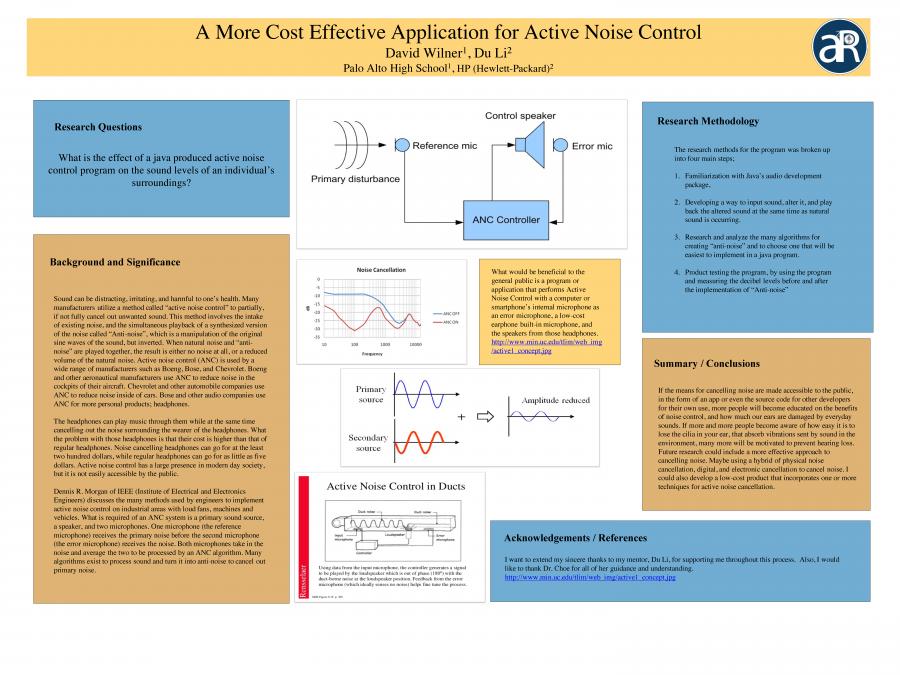Investigating the Effect of a Java Produced Active Noise Control Program on the Sound Levels of an Individual’s Surroundings by David W.
Presentation
Summary
What is the effect of a java produced active noise control program on the sound levels of an individual’s surroundings? Sound can be distracting, irritating, and harmful to one’s health. Many manufacturers utilize a method called “active noise control” to partially, if not fully cancel out unwanted sound. This method involves the intake of existing noise, and the simultaneous playback of a synthesized version of the noise called “Anti-noise”, which is a manipulation of the original sine waves of the sound, but inverted. When natural noise and “anti-noise” are played together, the result is either no noise at all, or a reduced volume of the natural noise. Active noise control (ANC) is used by a wide range of manufacturers such as Boeng, Bose, and Chevrolet. Boeng and other aeronautical manufacturers use ANC to reduce noise in the cockpits of their aircraft. Chevrolet and other automobile companies use ANC to reduce noise inside of cars. Bose and other audio companies use ANC for more personal products; headphones. The headphones can play music through them while at the same time cancelling out the noise surrounding the wearer of the headphones. What the problem with those headphones is that their cost is higher than that of regular headphones. Noise cancelling headphones can go for at the least two hundred dollars, while regular headphones can go for as little as five dollars. Active noise control has a large presence in modern day society, but it is not easily accessible by the public. Dennis R. Morgan of IEEE (Institute of Electrical and Electronics Engineers) discusses the many methods used by engineers to implement active noise control on industrial areas with loud fans, machines and vehicles. What is required of an ANC system is a primary sound source, a speaker, and two microphones. One microphone (the reference microphone) receives the primary noise before the second microphone (the error microphone) receives the noise. Both microphones take in the noise and average the two to be processed by an ANC algorithm. Many algorithms exist to process sound and turn it into anti-noise to cancel out primary noise. What would be beneficial to the general public is a program or application that performs Active Noise Control with a computer or smartphone’s internal microphone as an error microphone, a low-cost earphone built-in microphone, and the speakers from those headphones. My research plan will consists of four main steps; the first researching and analyzing Java’s audio development package, the second being a way to input sound, alter it, and play back the altered sound at the same time as natural sound is occurring. The third step, which is the most challenging, will be to research the many algorithms for creating “anti-noise” and to choose one that will be easiest to implement in a java program. The fourth step will be product testing the program, by using the program and measuring the decibel levels before and after the implementation of “Anti-noise”.

